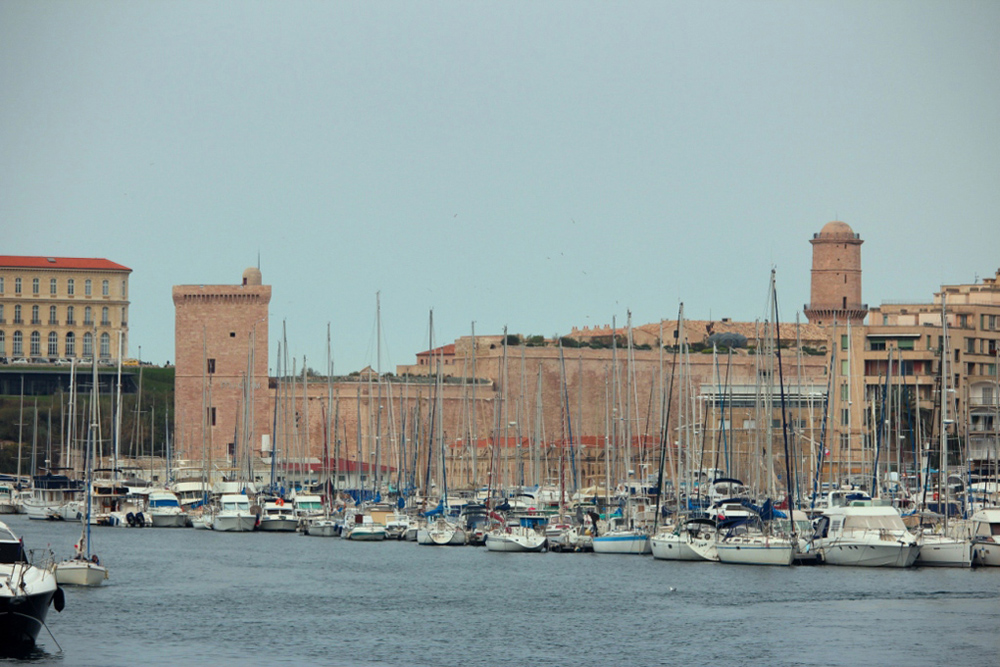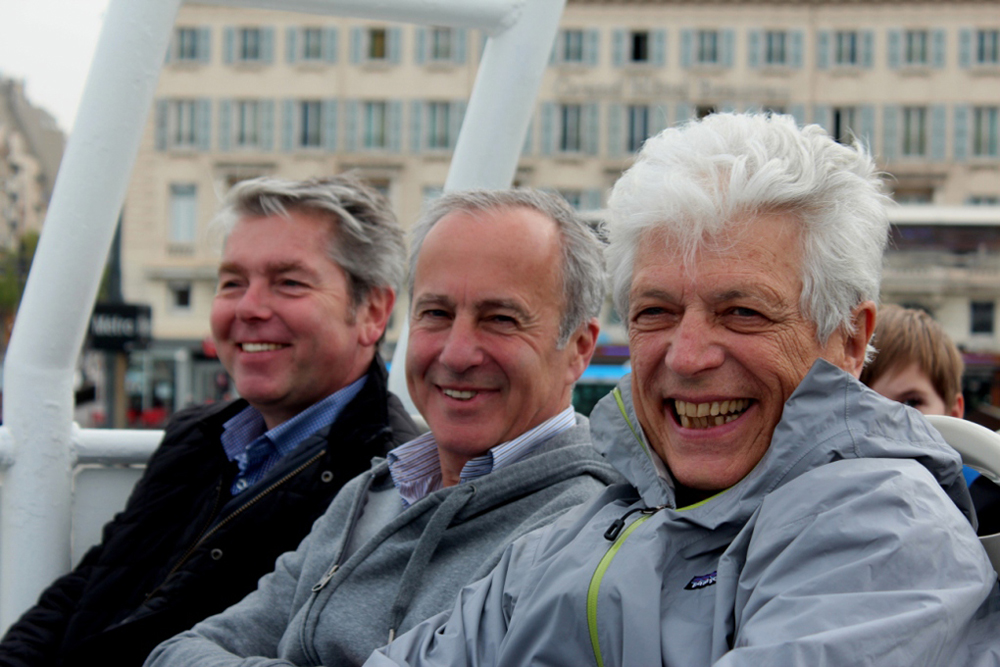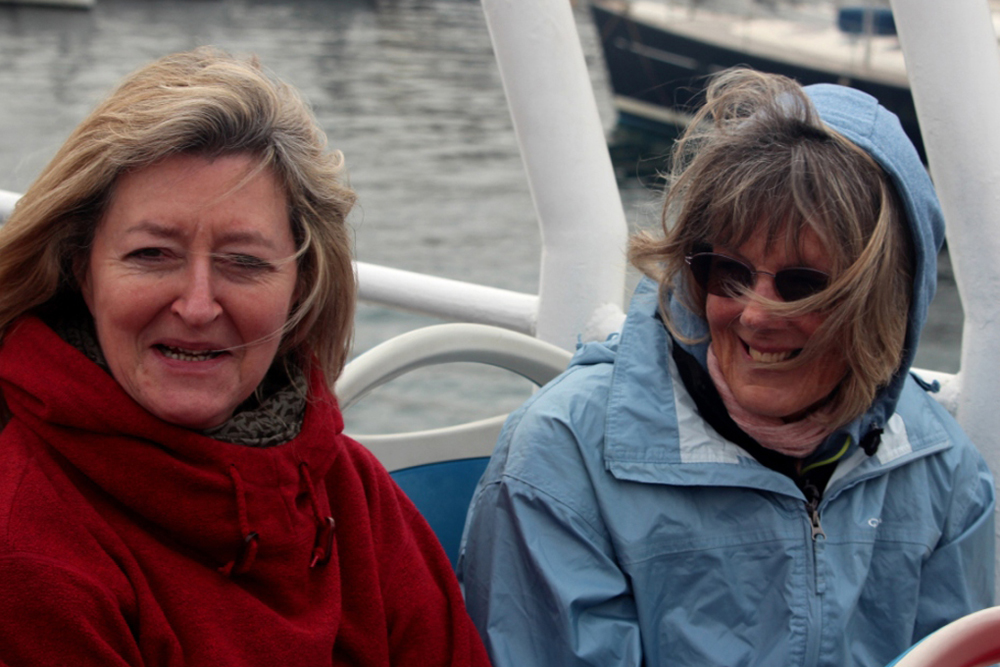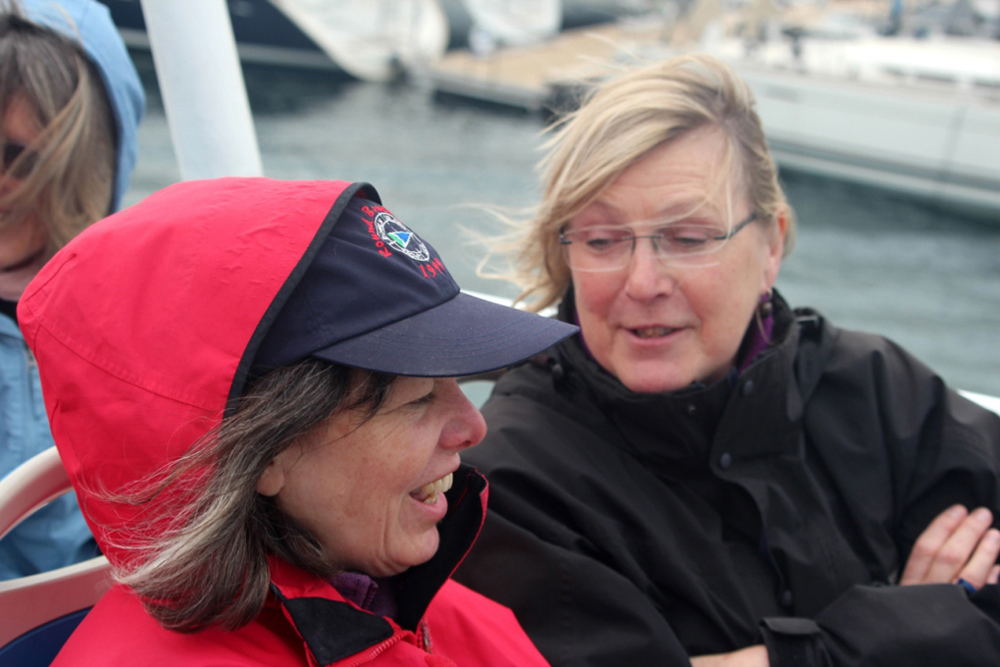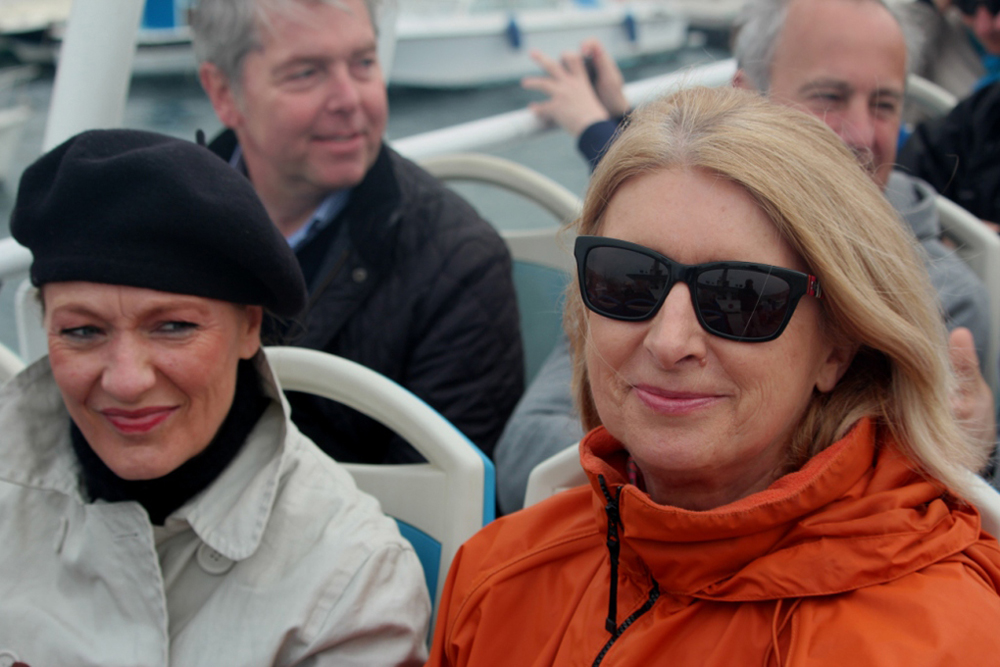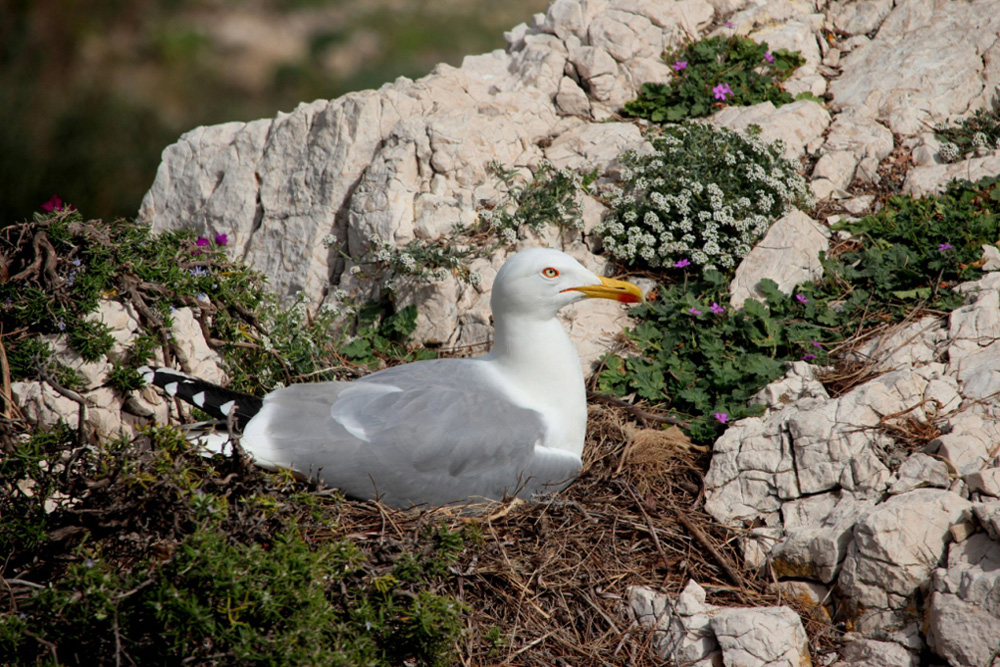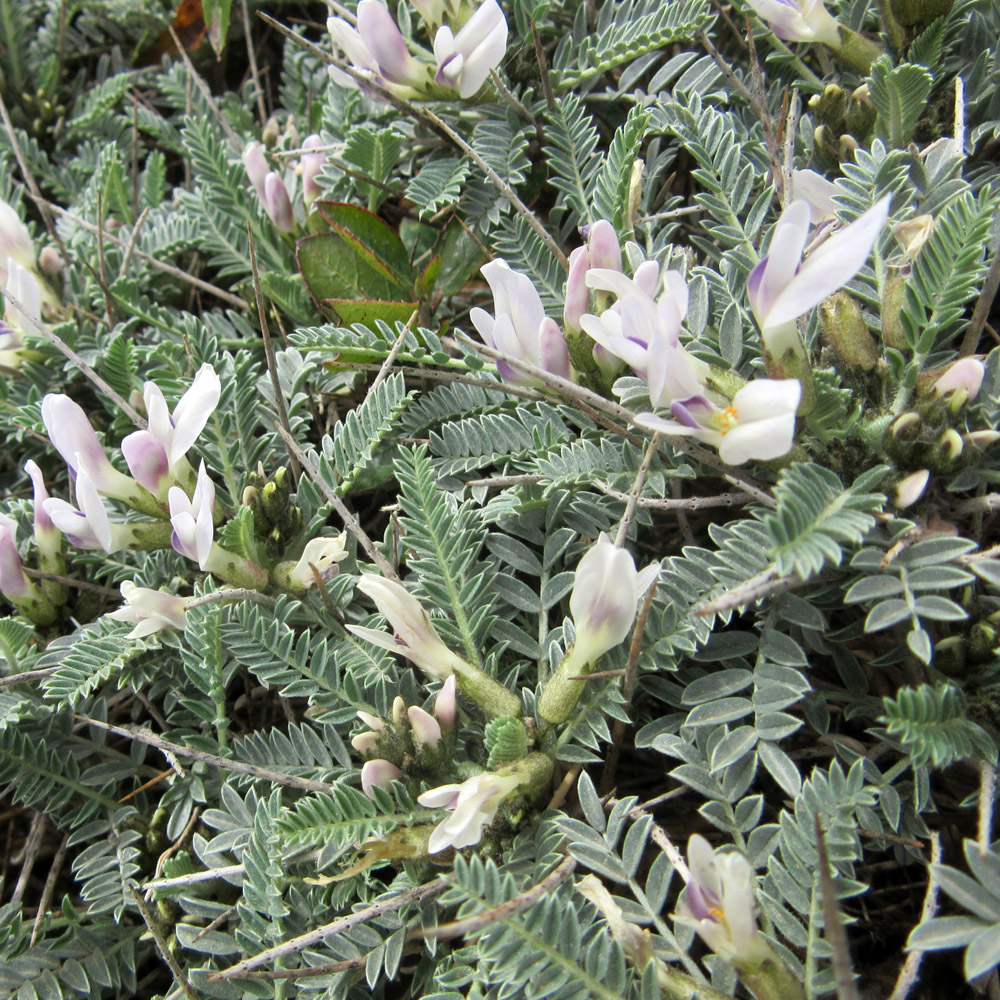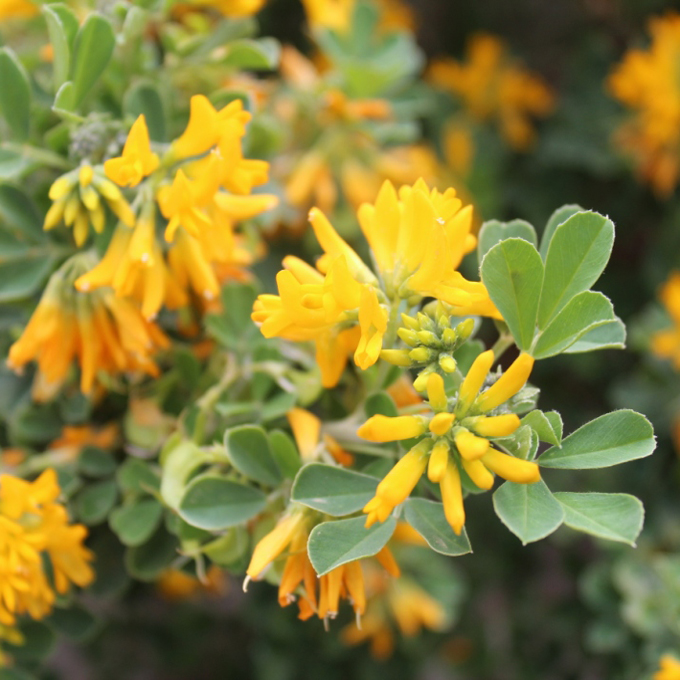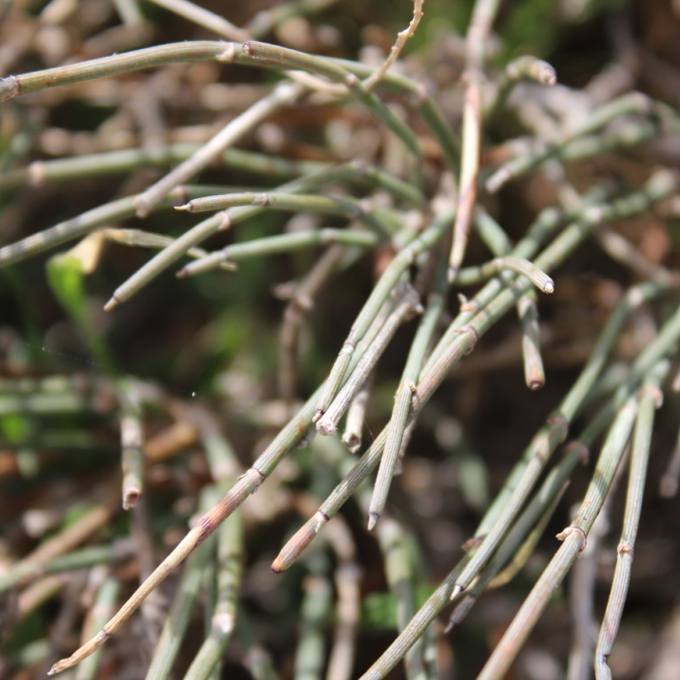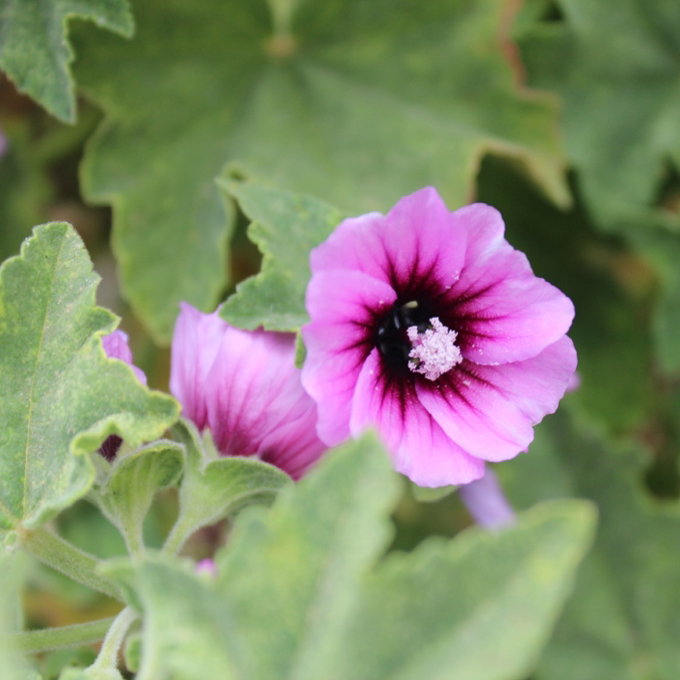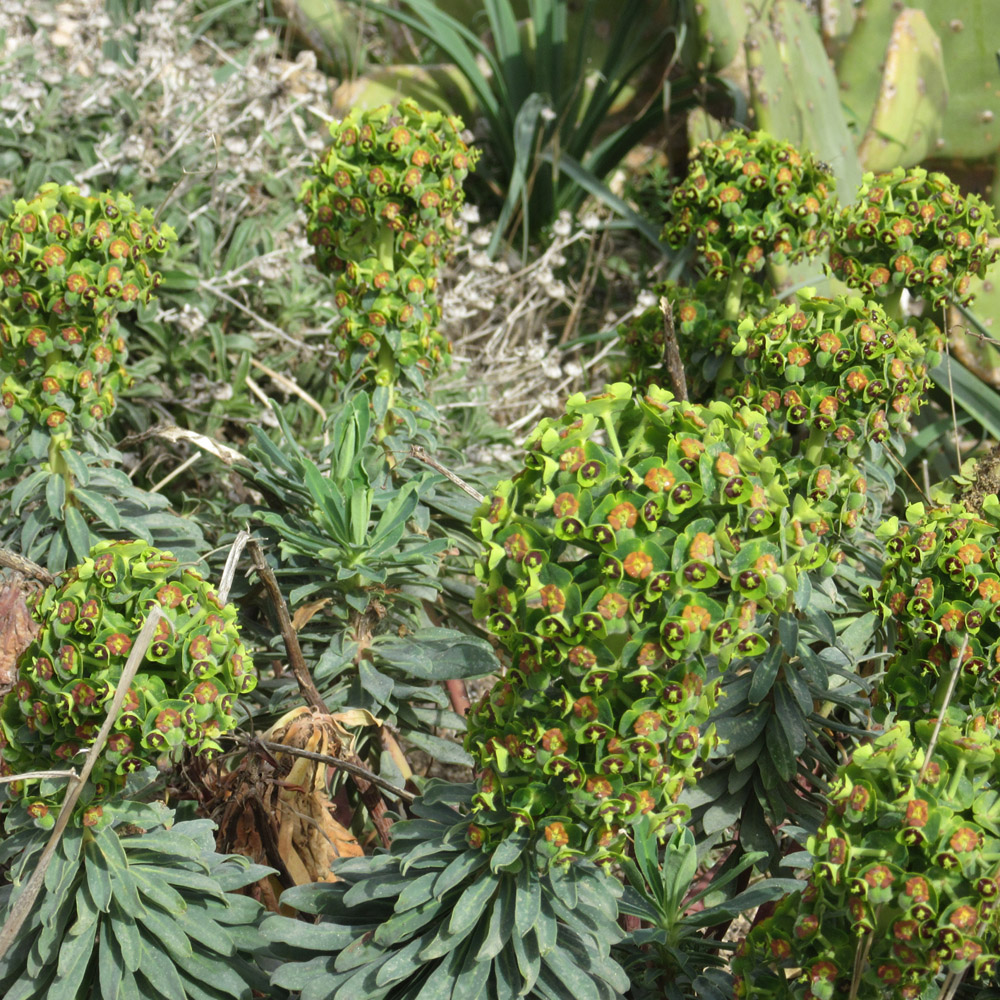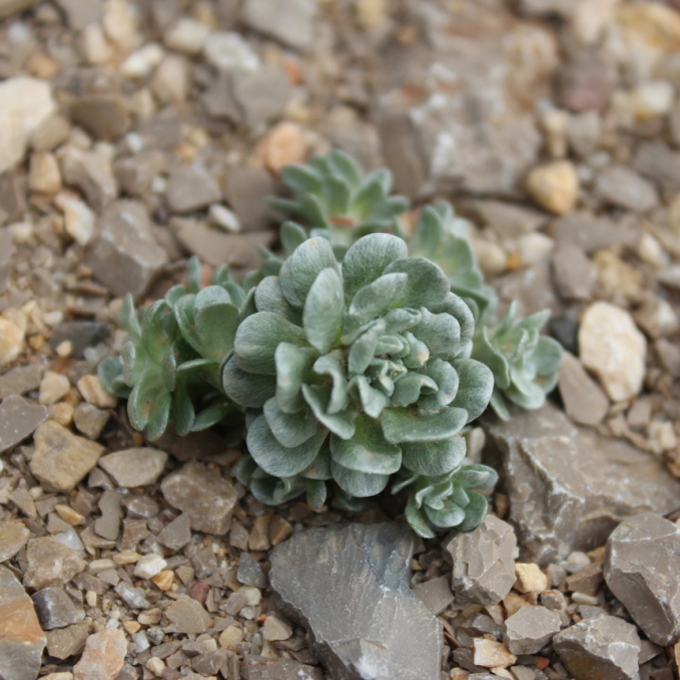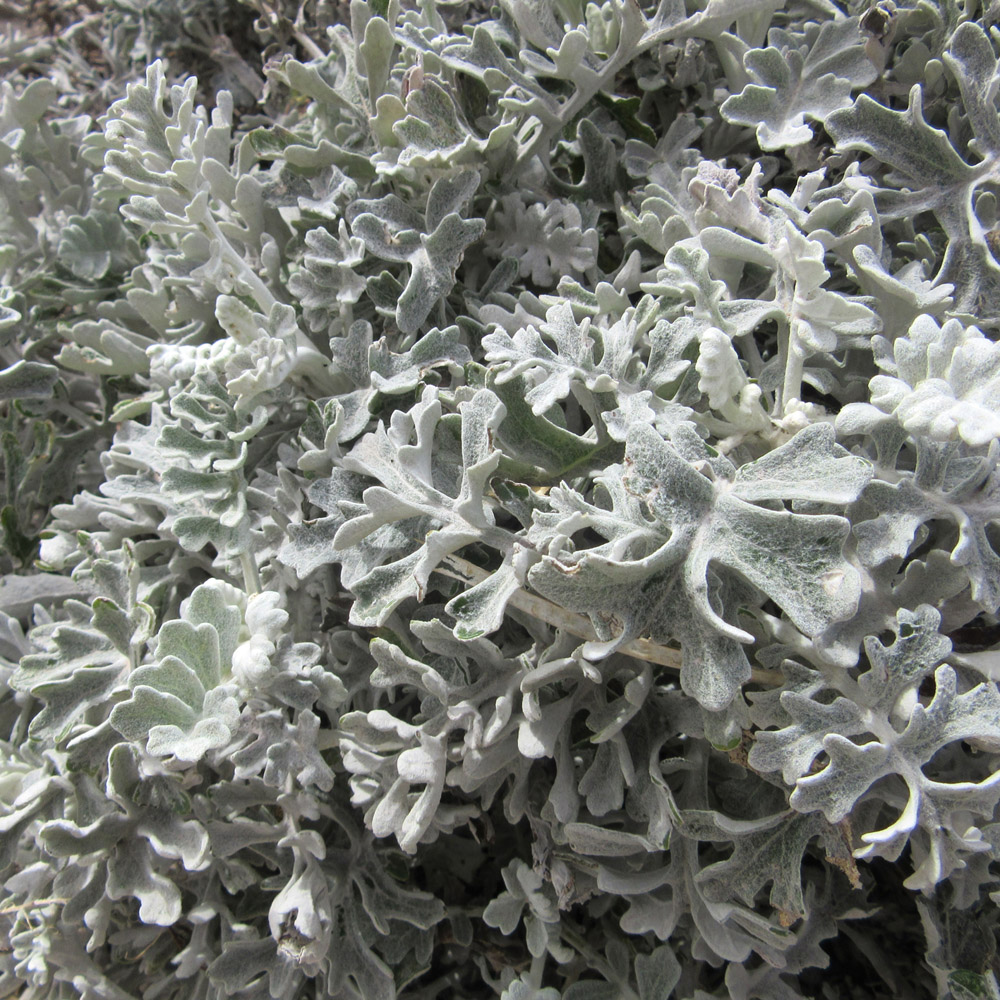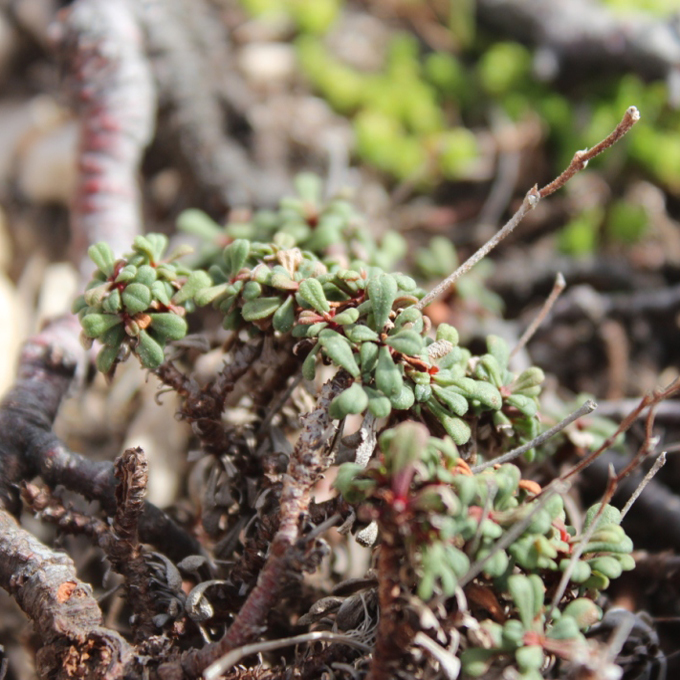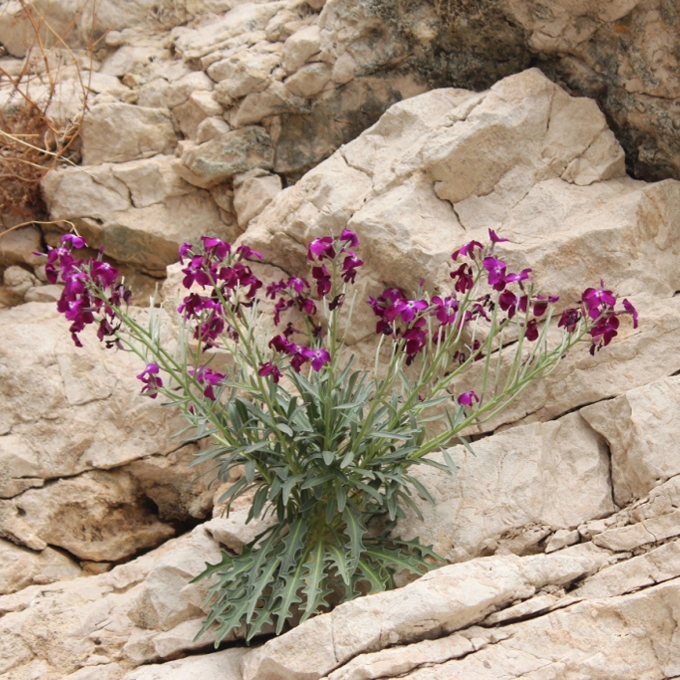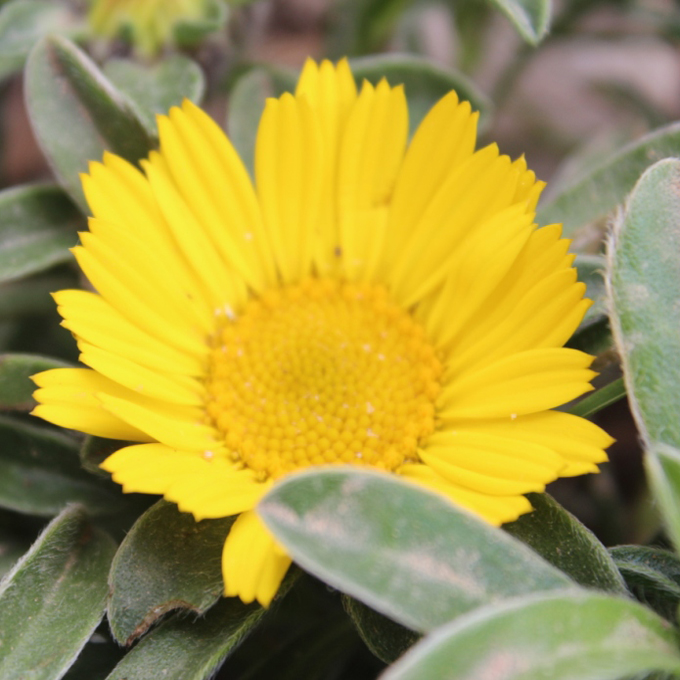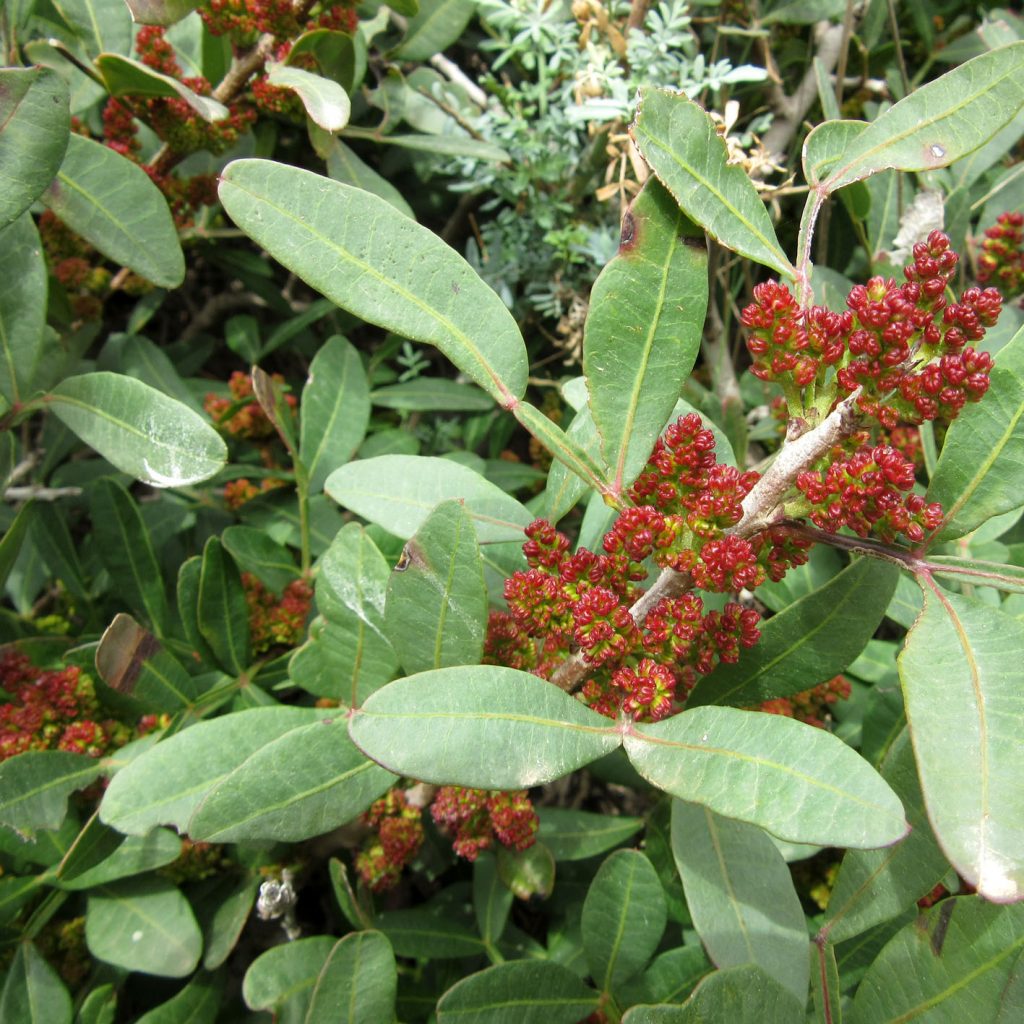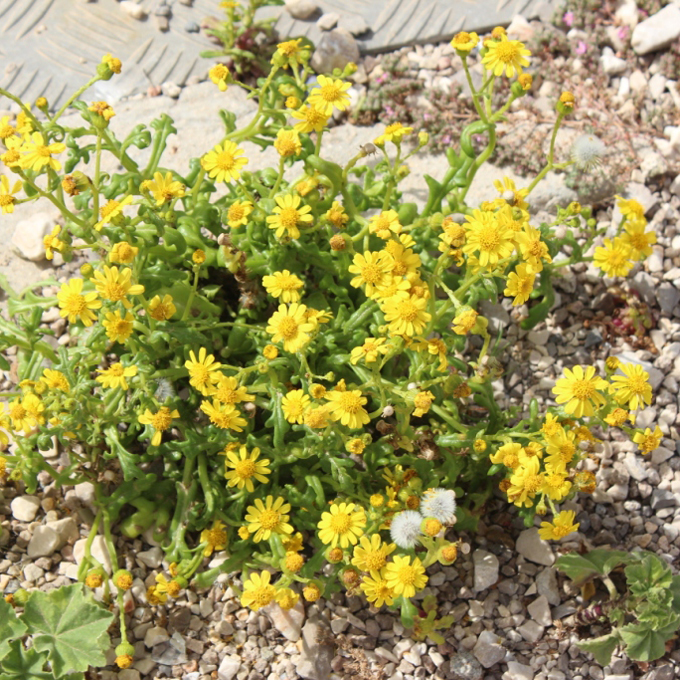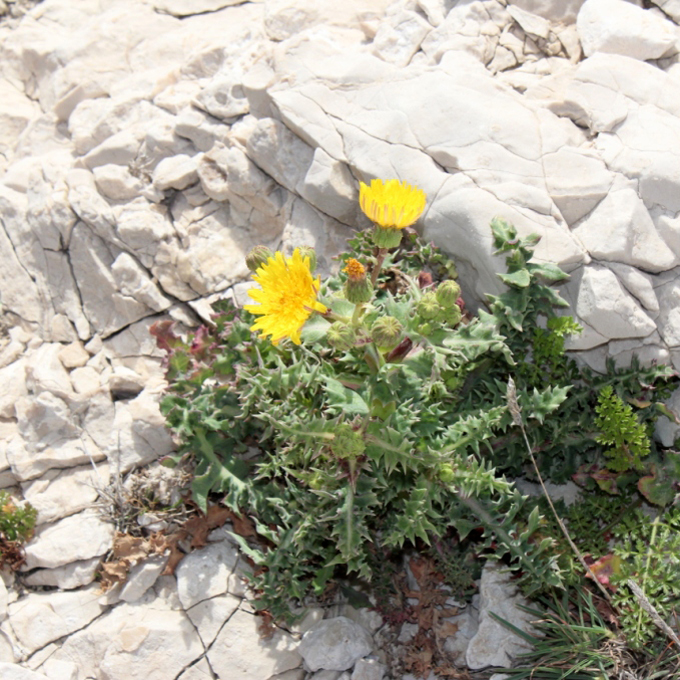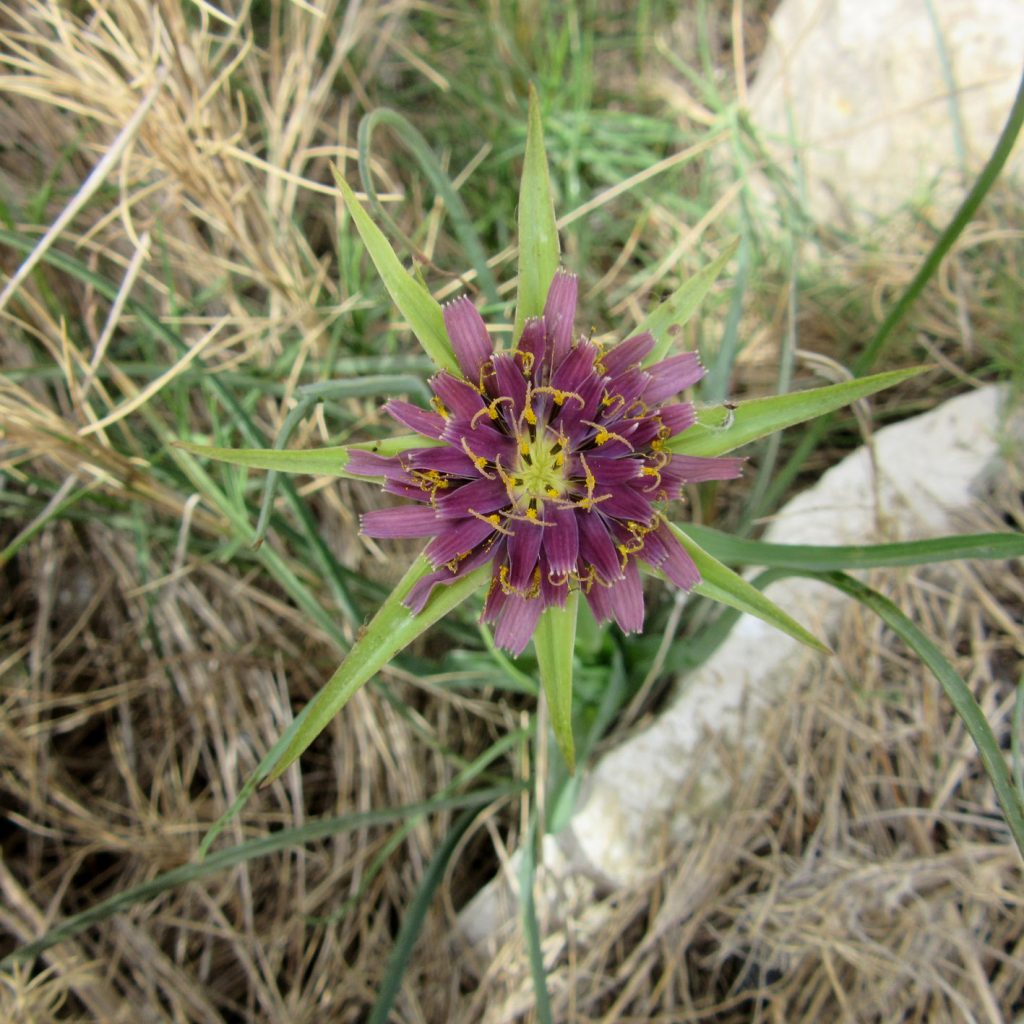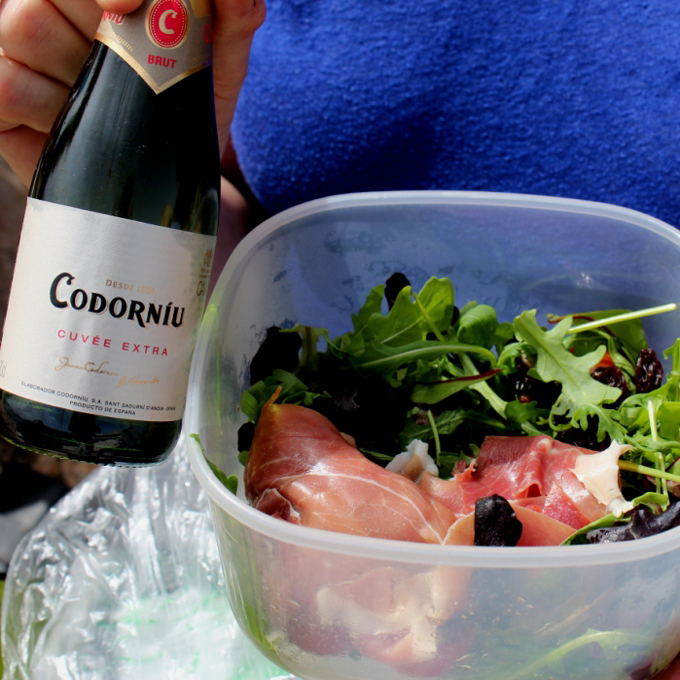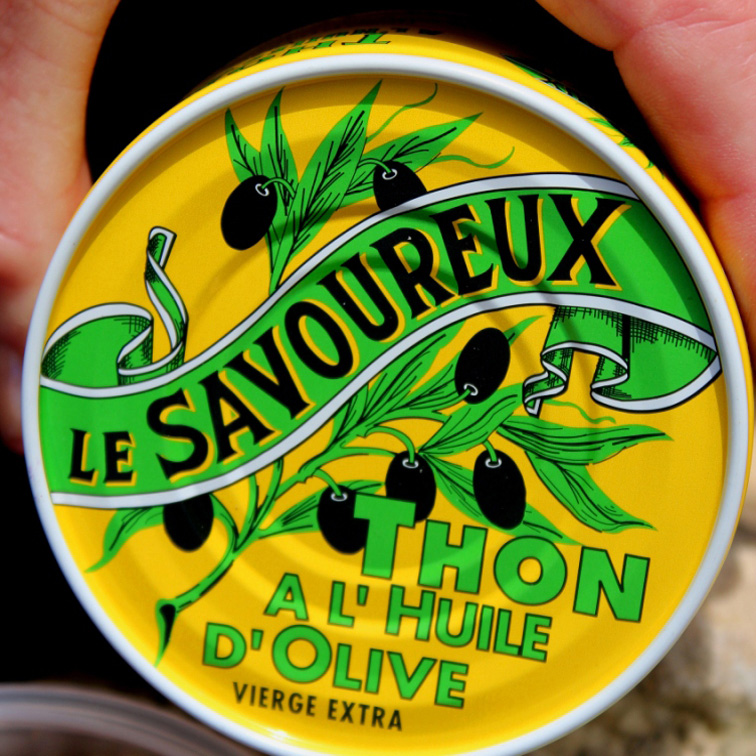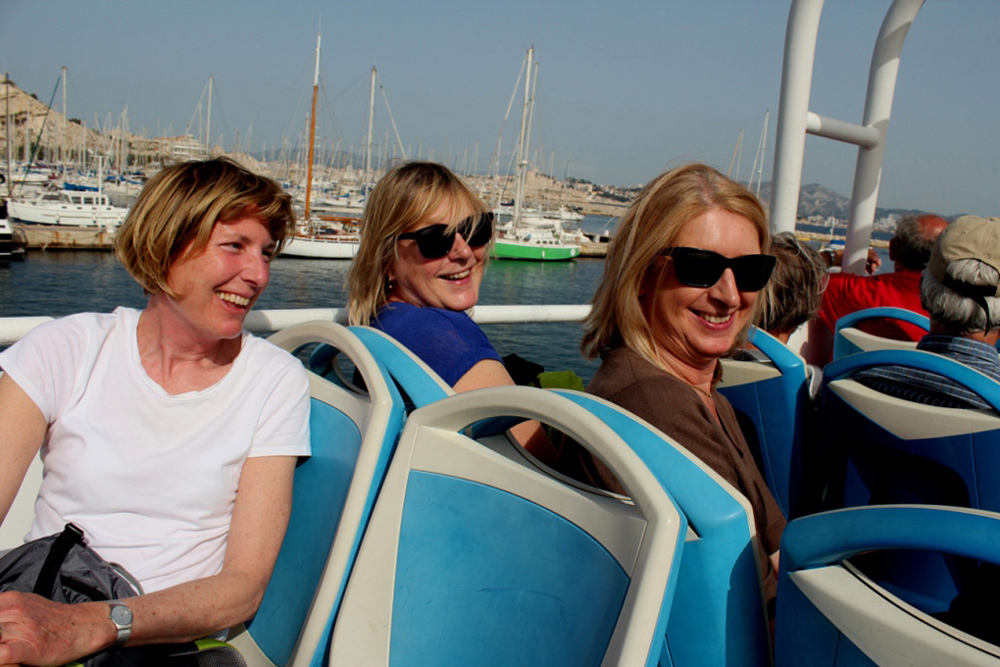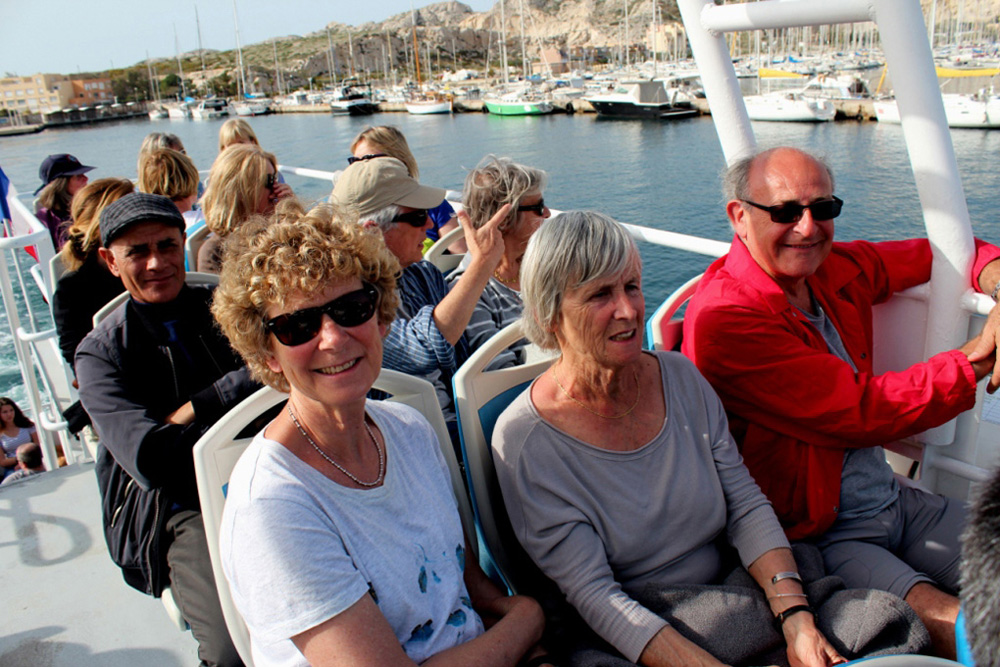April / avril 2016
A botanical walk on the Îles du Frioul
Click on an image to enlarge it / Cliquez sur une image pour l’agrandir
Many thanks to both Sandra Cooper and Gérard Weiner of the Pépinière Botanique de Vaugines for organizing a splendid, and thankfully sunny, April outing to the Frioul archipelago off the coast of Marseille. Owned by the Ministry of Defence until the 1970s, the islands are now owned by the city of Marseille as a maritime park, assuring the preservation of its particular ecosystems. We ferried from the Old Port, arriving a bit wind-swept and chilly half an hour later to explore two of the four which make up this most interesting group of islands.
About 19,000 years ago, the islands were part of what is now the mainland; the sea was 135m below today’s levels. The land was well forested and home to many mammals such as bison and deer. Water levels rose slowly over much time, creating the Marseille bay and the Frioul archipelago. Its strategic position close to Marseille for military endeavours from the times of Caesar through WWII and its use as a quarantine location for African and Eastern ships in the XVII century as well as a human quarantine location in the 1800’s have all made their mark on the terrain.
Today, these heat-drawing islands of white calcaire are located in the most arid part of France – very little rain, very sunny and very strong winds.
There is no source of fresh water on the islands. The trees have disappeared, as have the large mammals. In addition, the numerous seagulls that inhabit the islands have created a very acidic environment causing a change in types of flora found. (Based on the numerous nests we came across, this bird population is not endangered.)
A morning exploration of the northern island Rateau provided us with many opportunities to see lovely specimens of plants in full bloom. The islands are home to 20 national/regional protected plants and 200 plant species, see: Îles de Marseille. The flora is often stunted in growth, lying closer to the ground than in less extreme conditions. Gérard provided us with a list of plants which grow on Frioul, many of which we saw and were able to photograph:
We also saw Helichrysum stoechas, Silene sp., Teucrium polium subsp. purpurascens, tamarisk, honeysuckle, thyme, rosemary, speedwell and narcissi during our walk.
Also of great interest:
Spectacular views back across the sea to Marseilles provided panoramic vistas.
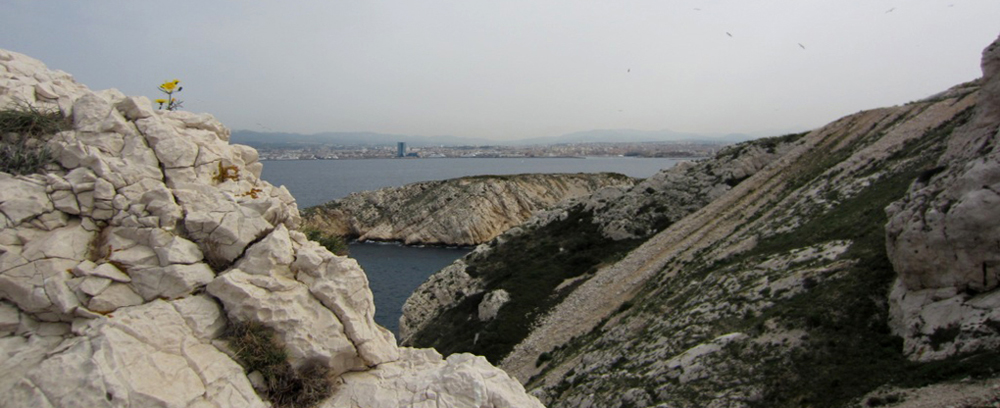
Picnic lunches were enjoyed on a beach and the clear blue water was too enticing for some!
Retracing our steps to the port of arrival, we continued across the causeway to explore the southern island of Pomègues. Also having various forts and an organic sea bass fish farm, it is somewhat less travelled than the northern island. More plant spottings and gorgeous sea views completed our day.
Back to the port and onto the return ferry – this time in wondrous sunshine with no need for coats and hats!
Text: Jennifer Hastings
Photographs: Kevan Kristjanson
![]()

